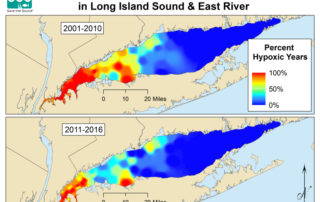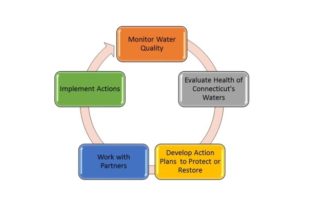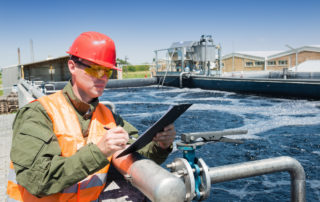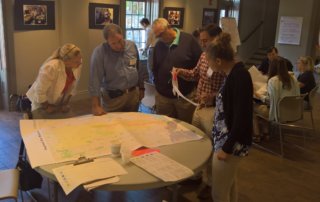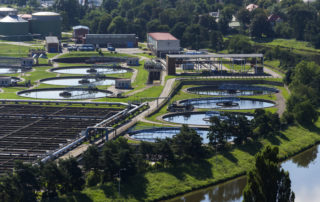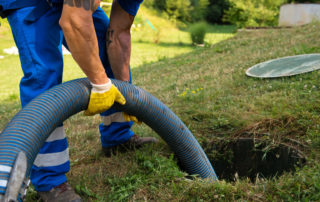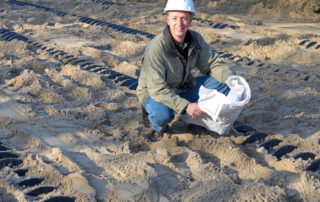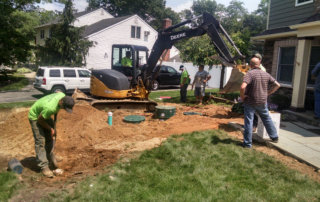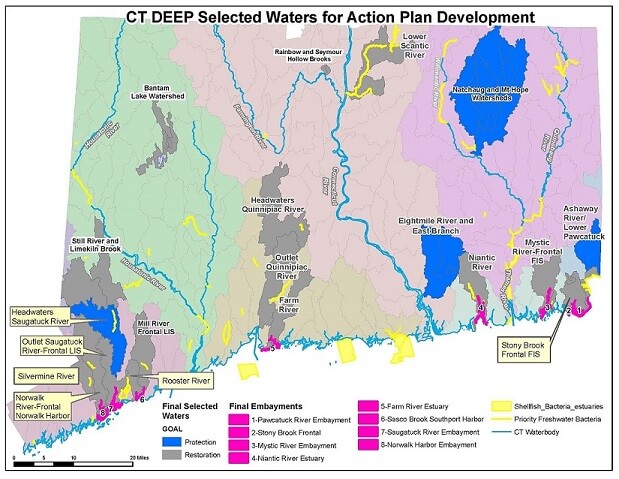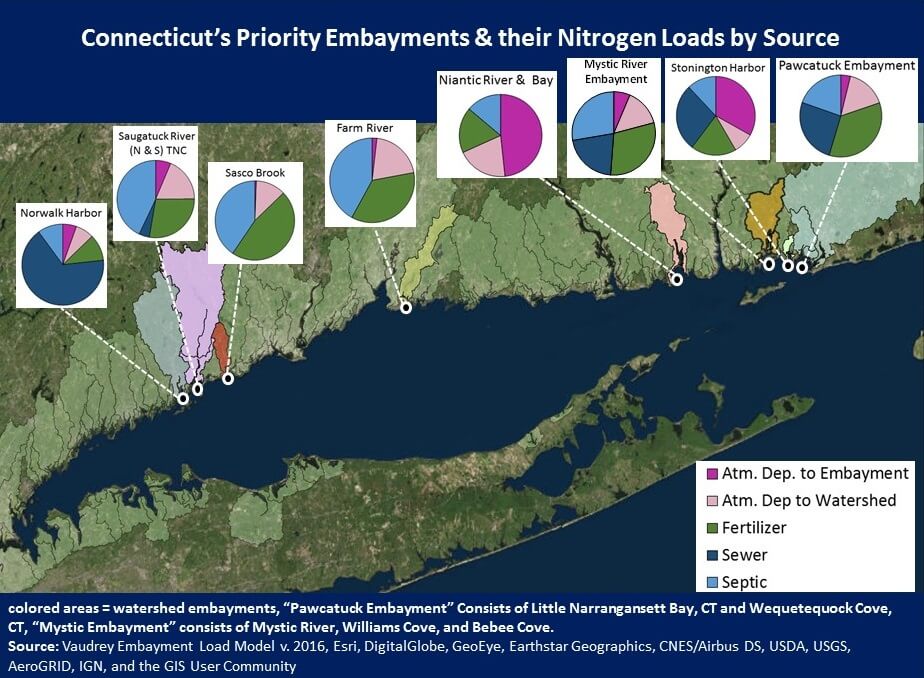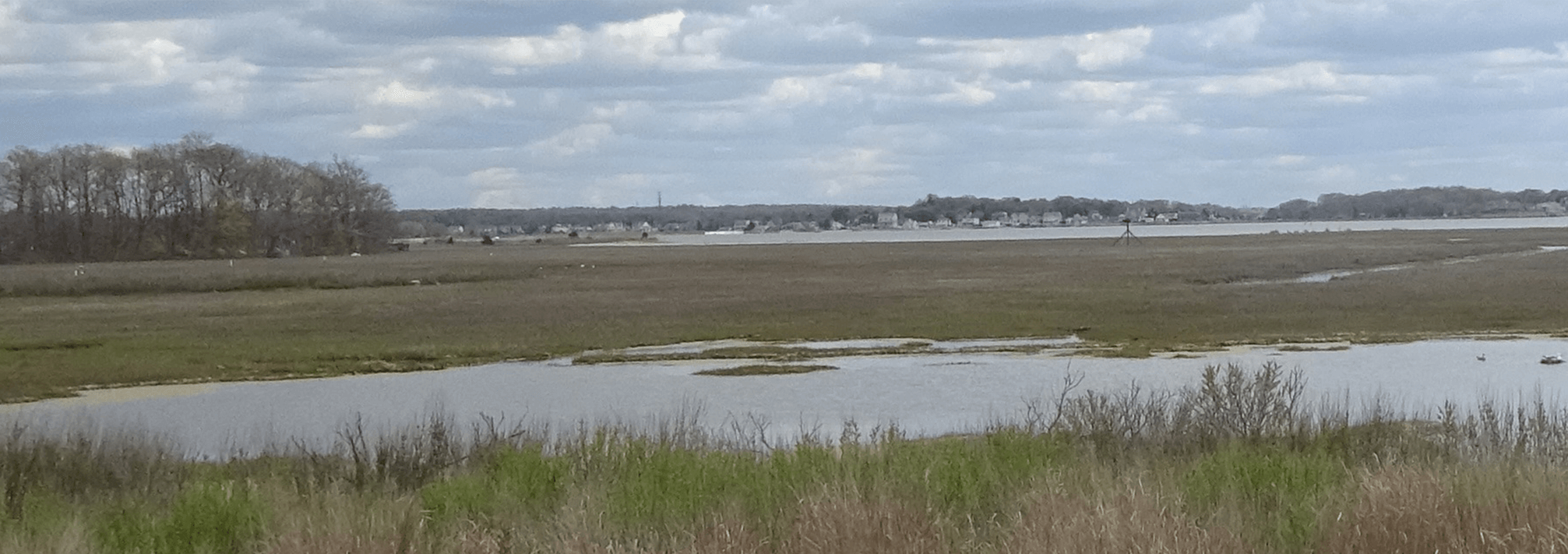
Fixing the Problem

What have we already accomplished?
Connecticut and New York have made great investments over the past 20 years to clean up Long Island Sound. Together with the U.S. Environmental Protection Agency (US EPA), in 2000, the states set a goal to reduce the amount of nitrogen discharged from sewage treatment facilities by nearly 58.5 percent. That milestone was achieved in 2016 and we’ve already seen improvements in the open waters of the Sound where the size and duration of low-oxygen dead zones has diminished. This means more oxygen is reaching the bottom waters, providing relief from the life-choking conditions that have harmed marine animals for decades. Increased sightings of whales, dolphins, schools of fish, and migratory birds are all indicators that the Sound is beginning to recover – but more can be done and we can’t afford to wait.
Monitoring and research show that the reductions made at sewage treatment facilities to date are not enough to resolve water quality problems in Long Island Sound’s coastal waters, rivers and harbors. Since technology upgrades at treatment plants began, the amount of nitrogen from septic tanks and fertilizers making its way to Long Island Sound has stayed steady or increased. We’re still seeing serious impacts like harmful algae blooms, fish kills and thick mats of seaweed appearing close to shore where people live, work and enjoy the Sound. To address these challenges, in 2016, the EPA proposed new actions to establish pollution thresholds and further reduce nitrogen pollution in Long Island Sound’s at-risk harbors and bays.

What still needs to be done?
Building on the great progress made by upgrading wastewater treatment facilities, the EPA is now implementing the Long Island Sound Nitrogen Reduction Strategy, which focuses new attention on nitrogen pollution from septic systems and fertilizers across the landscape. The effort calls for developing nitrogen load thresholds that support healthy conditions in coastal harbors and bays, large river systems and western Long Island Sound. Using these thresholds, states and communities can set pollution reduction targets, identify the sources and relative contributions of nitrogen pollution in their local watershed, and find solutions to tackle the problem.
In 2017, New York State appropriated $5 million for the Long Island Nitrogen Action Plan (LINAP) to reduce nitrogen pollution entering Long Island’s groundwater, streams, wetlands and estuaries – including Long Island Sound. Studies show that more than 70 percent of households in eastern Long Island’s Suffolk County are not connected to sewers, making wastewater from septic systems and cesspools the biggest threat to eastern Long Island’s water quality. State and local agencies are working to develop and implement a comprehensive science-driven plan and upgrade wastewater treatment systems to achieve crucial water quality goals.
In Connecticut, the Department of Energy and Environmental Protection (DEEP) used an innovative nitrogen credit exchange program to meet the state’s wastewater treatment facility reduction goal ahead of schedule. Now, Connecticut’s Second-Generation Nitrogen Strategy aims to complete planned upgrades at wastewater facilities, enhance stormwater management and focus attention on coastal harbors and bays.

Why focus on coastal waters?
The Long Island Sound shoreline is composed of many recesses or indentations called embayments. These bays, harbors, river mouths, and coves are filled with animal and plant life, and are the places where people interact the most with Long Island Sound. From swimming, paddling and fishing to walking along its beaches, residents and visitors enjoy the edge of Long Island Sound’s waters.
Coastal waters also support seagrass meadows and tidal marshes that provide essential nurseries and foraging areas for flounder, shrimp, bay scallops and dozens of other species. Setting and meeting nitrogen limits will protect the Sound’s harbors, bays and the way of life people cherish – now, and for future generations. And studies by The Nature Conservancy show voters in coastal communities’ support taking quick action to safeguard coastal waters.
Through an Integrated Water Resource Management planning process, the Connecticut DEEP evaluated nitrogen pollution loads, ecological conditions and public values – like swimming and fishing – as well as potential for recovery across the state’s waters. Eight coastal embayments were prioritized for increased monitoring of impacts and development of nitrogen action plans to restore, manage and protect healthy coastal waters.

Estimating Nitrogen Loads and Monitoring Impacts
Understanding how sources and contributions of nitrogen pollution vary between harbors and bays allows agencies and communities to choose proven solutions for reducing nitrogen.
Tackling nitrogen pollution from sources spread across the landscape is challenging, but the Conservancy’s research in coastal communities indicates voters are willing to take steps – like upgrading wastewater systems and reducing fertilizers – to improve water quality.
Explore and view nitrogen loads to Long Island Sound Embayments with the UCONN CLEAR Map Viewer.
Learn more about Long Island Sound’s Unified Water Study – a coordinated water quality monitoring protocol for different groups to collect comparable data and help track progress toward restoring healthy conditions in coastal waters.
